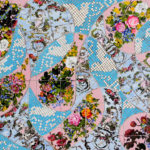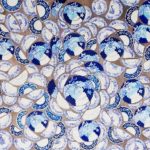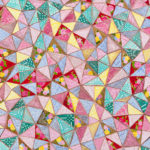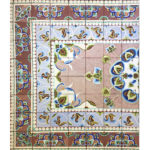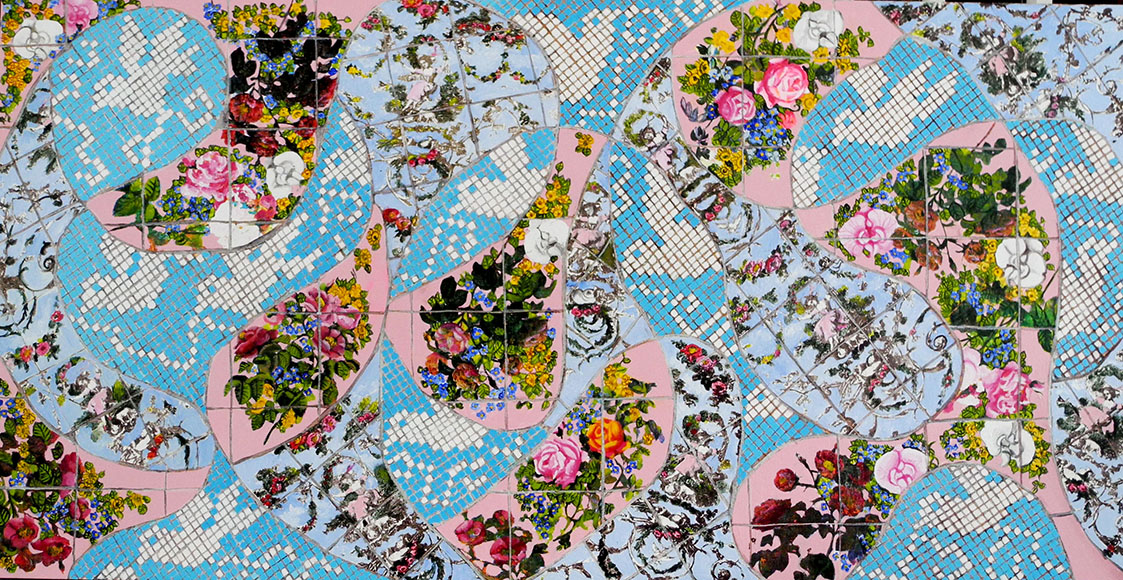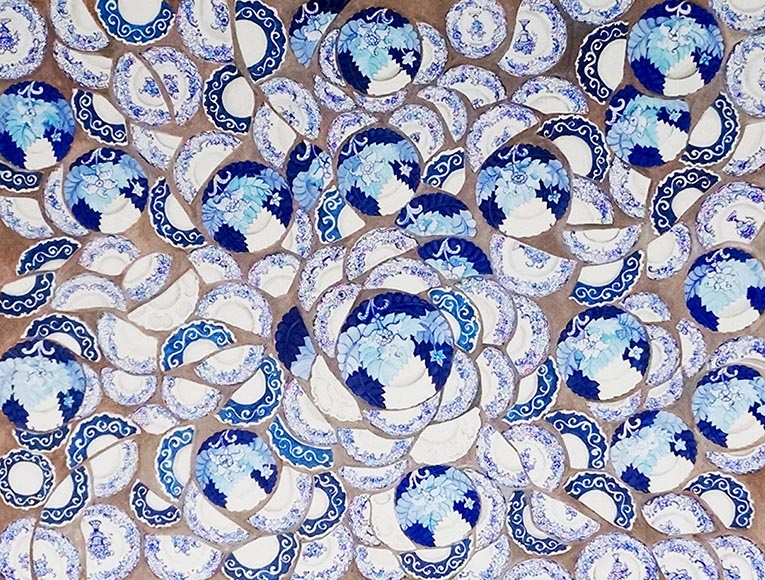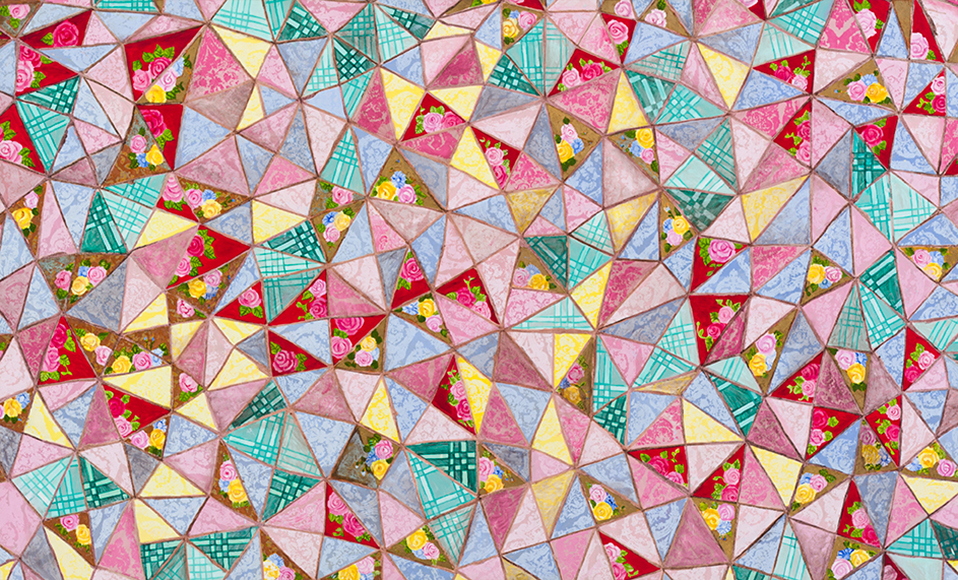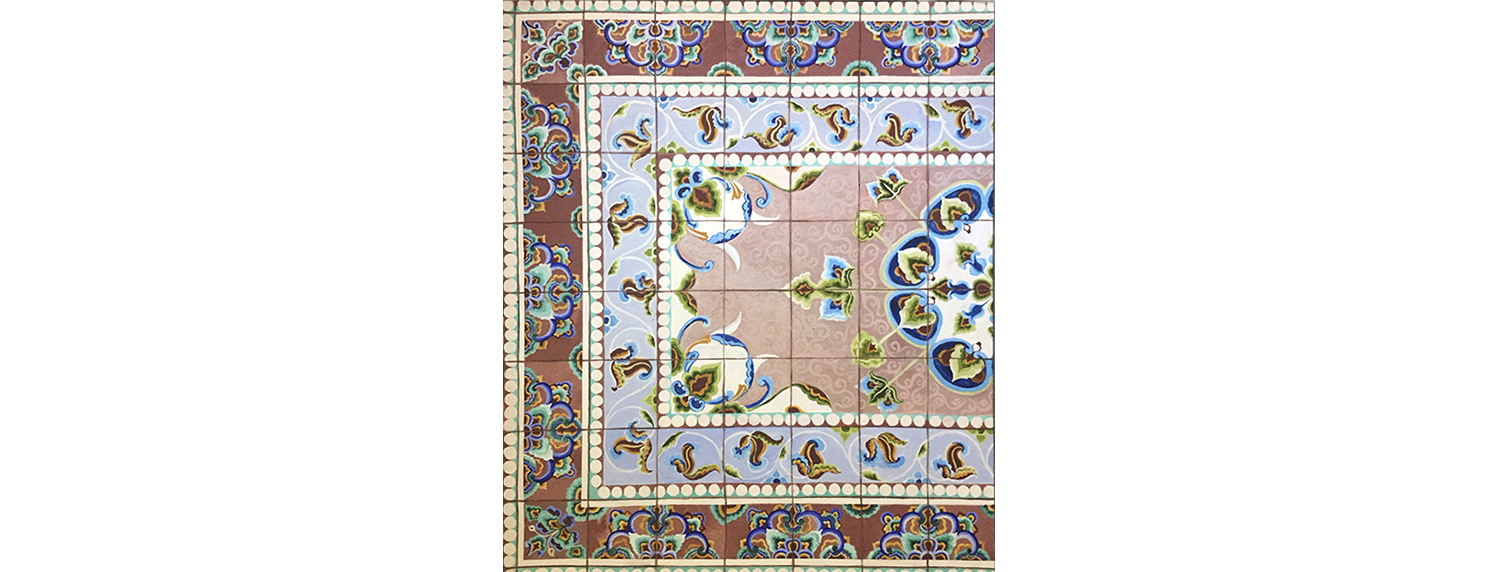Assembled through a remake of the baroque in a quest for a solid foundation through historical research, and the discovery that this iconography awakes, it is a lushly colored painting that goes out there searching the historical past, especially architectural, for a figurative representation. From that moment on, we have a starting point, the memory. From then on, in a work closely evoking pop culture or pop art elements in its treatment, sharing space with comic books, composing a work where the popular culture from its images share the neighborhood with pictures from erudite pieces, especially the baroque found on the walls of old churches from Bahia, their saints, angels and tiled designs, where all these images expose themselves, sparing nothing, seduced by their vibrant colors. At this stage, we have the invention. But this painting, in its representation, in the mixing or vertical dipping of styles, by technique or expression, is what the freedom granted by the act of creating provides, especially by using colors, mostly pure, intense, vibrant, so that we can see in a different way what has been right under our noses for so long, as a tile, or dress or a facade fragment, elements and representations which inhabits our history, our people, our land, forming elements of our character, our culture and our imaginary.
Iuri Sarmento was born in Montes Claros, Minas Gerais, Brazil, 1969. He currently works and lives in São Paulo. He graduated in Fine Arts at Escola Guignard, Belo Horizonte. His first individual show happened in 1992, at Sala Corpo de Exposições, Belo Horizonte, followed by the exhibition at the Museu de Arte Moderna da Bahia Museum, in 1999. One of his last solo shows was at the Galerie Agnès Monplaisir in Paris, France. In 1999 he was chosen for the Rumos project, from Itaú Cultural, and was among the winners of the VI Salão da Bahia (1999). In the years that followed, he has participated in shows at Centro Cultural Ramón Alonso Luzzy, in Cartagena, Spain (2000); Pintura Baiana (Paintings from Bahia) in Porto, Portugal; Mercosur Biennial in Porto Alegre, Rio Grande do Sul, Brazil; and in 2005 the exhibition Bahia e Buenos Aires Unidas pela Arte (Bahia and Buenos Aires United by Art), at the Museu de Arte Moderna da Bahia Museum, and in the Museo de Bellas Artes de la Boca “Benito Quinquela Martin”, Buenos Aires, Argentina.
How do you identify the starting point for the creative process of your art? What drives it? How does your working process work?
Everything in my work is recurrent in front of everything that has been done before. Like a conducting wire, I’m opening and expanding this wide range of possibilities. What drives me is the desire for overcoming, the sense of accomplishment from finishing a work. My work process is nothing more than doing one job after another. Before finishing one, my creativity is already coming up with new ideas.
What role does memory play in the creation of your work? Art memory or popular memory?
There’s always a lot of memories. My work is always chock-full of references that I manage to dig about everything that moves my emotions. I take it from several sources, or I work as an antenna. Yes, there’s a lot of popular memory in my work, yes.
One of the points highlighted by the art critics is the historical investigation that your painting exhibits. How do you feel about that?
The historical investigation has been an important part of me since I’ve arrived in Bahia, 15 years ago. Everything here was a brand new discovery and everything was reason for a new universe opening up, and I started searching and exploring, and always expanding. It is a reunion with something that was always there, and now exists in another way, but it was there already. And we can always see it in more than one way.
About your work, critics also emphasize the vibrant colors, the colorful dialogue and clash between them. What does all that color mean for your work process?
I always use pure color in my work. Bahia is always the guiding light in my paintings, from the most titanium white, sometimes becoming gold or silver, to the shock of vibrant colors, like red and yellow, the shades of blue, and all the others. I spare no color in my work.
Is your painting a reinvention of the baroque? Or is the pop art more present?
The baroque was always an inspiration for my paintings. Being from Minas Gerais, these references were always a part of me. But I’ve always tried to mix styles, like a palette. You might be able to, after an investigation, begin to notice several kinds of information.
Is it an allegorical painting?
Yes, it is as well. I absolutely love ornaments, volutes, architectural fragments and so on.
We are living in a time of multiple actions – painting, drawing, sculptures, photography, video, installations, performances, the digital media as a creative vehicle. How do you see yourself in this overview, being essentially a painter?
I do not believe anymore in just one medium. I think contemporary art is precisely about this freedom the artists can give themselves, be able to walk around by several techniques and ways of expressing themselves, but we can also be totally immersed in a single technique and explore the most of it. In what I have been doing, I’m giving priority to painting, because it requires a lot of time, but I’m experimenting with other possibilities as well.
Who are the artists who stimulate you or are your favorites? Who do you admire?
There’s so many: Giotto, Velázquez, Matisse, Andy Warhol, Julian Schnabel.
How do you see the market for contemporary artists like yourself?
Yes, I believe that the market is growing, and I think people are now able to be closer to the so-called contemporary artists.
How do you see art now in Brazil and, more specifically, in Bahia?
It’s already a reality, there is a consolidation, yes, of artists in the international market, such as Beatriz Milhazes, Tunga, Ernesto Neto, and others. In Bahia you can witness the success of talented artists such as Marepe, Caetano Dias, Ayrson Heráclito. The art from Bahia is doing very well, thank you very much.
(interview/May, 2008)


